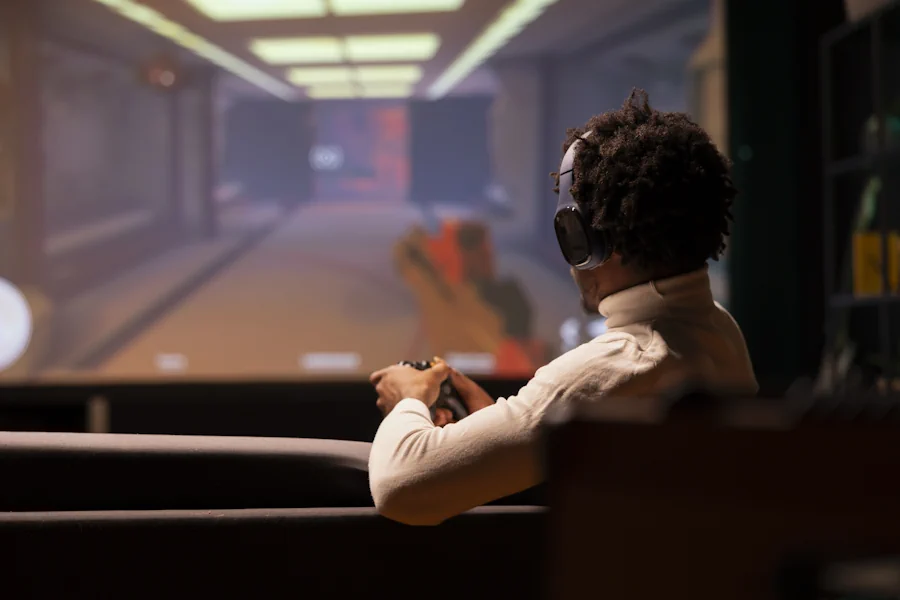In an increasingly digital world, the intersection of theater and video games has emerged as a revolutionary tool in youth education. Theater, with its deep roots in narrative and character development, and video games, known for their immersive and interactive experiences, form a powerful synergy that enhances learning in unique and engaging ways. As educational institutions seek innovative methods to engage students, theater-inspired video games are carving out a significant role in classrooms, combining the best of both worlds to foster creativity, critical thinking, and social skills among young learners.
The Intersection of Theater and Video Games
Theater and video games may seem like disparate mediums, but they share a common thread in their emphasis on storytelling, character development, and dramatic tension. In theater, the narrative is brought to life through the physical presence of actors and the immediacy of live performance. Similarly, video games offer players a chance to step into the shoes of characters, making choices that influence the story’s outcome, thereby creating a deeply personal connection to the narrative.
One of the most compelling aspects of video games is their ability to engage players through interactive storytelling. Unlike passive forms of entertainment, video games require players to actively participate in the unfolding story, much like an actor in a play. This level of engagement not only enhances the gaming experience but also reinforces the learning process. For example, games like “Journey” and “The Last of Us” are celebrated for their rich narratives and complex characters, which draw players into their worlds much like a well-written play captivates its audience.
Theater-inspired video games take this concept further by incorporating elements of drama and performance into gameplay. These games often include narrative arcs, character-driven plots, and emotionally charged scenarios that require players to make decisions, solve problems, and collaborate with others. This approach not only makes learning more engaging but also helps develop important life skills such as empathy, communication, and problem-solving.
Educational Benefits of Theater-Inspired Video Games

The integration of theater-inspired elements in video games offers numerous educational benefits. One of the key advantages is the enhancement of cognitive skills. Video games that incorporate theatrical narratives require players to think critically, remember details, and make decisions based on the information presented to them. This active engagement with the material can lead to improved concentration, memory, and problem-solving abilities.
Moreover, the collaborative nature of many theater-inspired video games fosters social interaction and teamwork. In multiplayer games, players often have to work together to achieve common goals, mirroring the collaborative process of a theatrical production. This interaction helps build communication skills, teaches the importance of teamwork, and encourages players to think creatively to overcome challenges.
Creativity and emotional expression are also significantly enhanced through these games. Just as theater allows actors to explore different characters and emotions, video games provide a safe space for players to experiment with different personas and scenarios. This can be particularly beneficial for young people who may be struggling to express themselves or who need a creative outlet to process their emotions.
Furthermore, drama games and theater activities integrated into video games can significantly enhance emotional intelligence. By putting players in situations where they must understand and respond to characters’ emotions, these games teach empathy and emotional regulation. For instance, games like “Hellblade: Senua’s Sacrifice,” which delves into the protagonist’s mental health struggles, provide players with insights into complex emotional landscapes, fostering a deeper understanding of mental health issues.
Case Studies and Examples
Several educational programs have successfully integrated theater-inspired video games into their curricula, demonstrating the potential of this innovative approach. One notable example is “Minecraft: Education Edition,” which has been used to teach everything from history to computer science. The game’s open-world format allows students to create their own narratives and engage in role-playing activities, much like in a theater production. Teachers have used this platform to reenact historical events, create virtual stages for storytelling, and even simulate social scenarios, all of which enhance students’ understanding of the subject matter.
Another successful example is the game “DramaGame,” specifically designed to merge theater and gaming. This educational tool allows students to create and perform their own plays within a virtual environment. The game not only teaches the basics of theater production but also encourages creativity, collaboration, and communication. Students can experiment with different genres, characters, and storylines, learning about the elements of drama in a fun and interactive way.
For those looking to explore more innovative games that blend education with entertainment, platforms like monobahis-giris.com offer a range of unique experiences worth discovering.
Challenges and Considerations

Despite the numerous benefits, there are challenges in integrating theater-inspired video games into traditional educational curricula. One of the primary concerns is ensuring that the educational content is not overshadowed by the entertainment aspect of the games. It is essential to strike a balance where the game’s engaging elements enhance rather than detract from the learning experience. Educators must carefully select games that align with educational goals and provide meaningful learning opportunities.
Another challenge is the accessibility and inclusivity of these games. Not all students have access to the necessary technology or the internet at home, which can create a digital divide. Schools and educational institutions need to ensure that all students have equal opportunities to benefit from these innovative educational tools. Additionally, game developers must consider the diverse needs of students, including those with disabilities, when designing theater-inspired video games.
Cultural relevance is also a consideration when integrating these games into education. As video games become more prominent in classrooms, it is important to ensure that the content is culturally sensitive and appropriate for the students’ backgrounds. Games should be designed with inclusivity in mind, reflecting diverse cultures, perspectives, and experiences.
Future Prospects
The future of theater-inspired video games in education looks promising, with new technologies and trends poised to enhance their effectiveness. One such trend is the integration of virtual reality (VR) and augmented reality (AR) into educational games. These technologies can create even more immersive experiences, allowing students to step into virtual worlds where they can interact with characters and scenarios in real-time. For example, VR can be used to simulate historical events or literary scenes, providing students with a deeper understanding of the material.
Interactive storytelling is another emerging trend that could revolutionize youth education. Games that allow players to influence the narrative through their choices can teach important lessons about consequences, ethics, and decision-making. As artificial intelligence (AI) continues to advance, we can expect to see more sophisticated narrative-driven games that adapt to individual players’ learning styles and preferences.
Moreover, there is potential for further collaboration between game developers and educators to create games specifically designed for educational purposes. These games could be tailored to different age groups, subjects, and learning objectives, ensuring that they meet the needs of a diverse student population. By working together, educators and developers can continue to push the boundaries of what is possible in educational gaming.
Conclusion
The integration of theater-inspired video games into education represents a significant step forward in creating engaging, immersive, and effective learning experiences for young people. These games offer a unique combination of narrative depth, interactive engagement, and educational content that can enhance cognitive skills, creativity, and social interaction. As the educational landscape continues to evolve, it is crucial for educators, developers, and policymakers to explore the full potential of this innovative approach to education.
As we look to the future, the continued integration of theater and video games holds great promise for revolutionizing youth education and preparing the next generation for the challenges and opportunities ahead.
